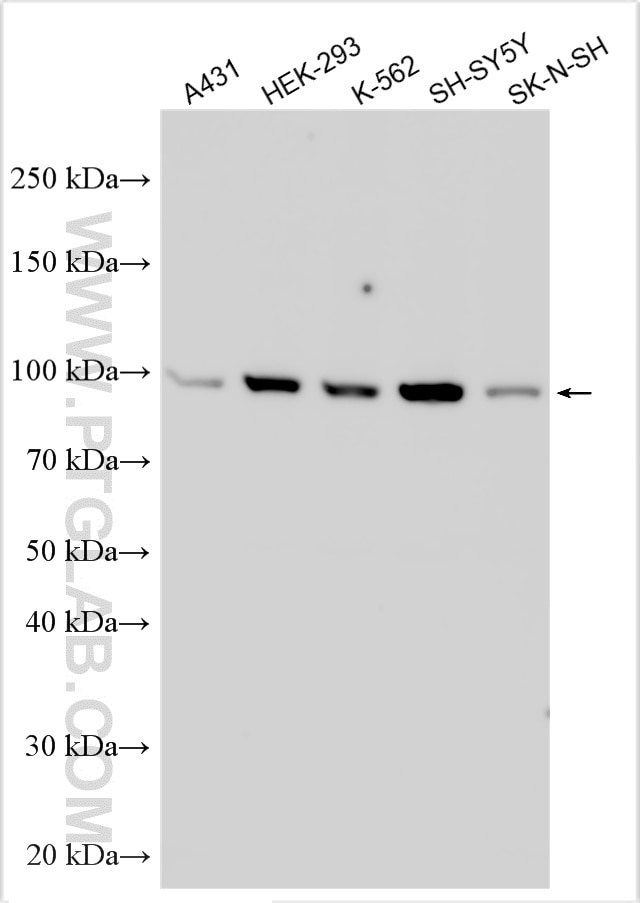Tested Applications
| Positive WB detected in | A431 cells, HEK-293 cells, K-562 cells, SH-SY5Y cells, SK-N-SH cells |
Recommended dilution
| Application | Dilution |
|---|---|
| Western Blot (WB) | WB : 1:1000-1:8000 |
| It is recommended that this reagent should be titrated in each testing system to obtain optimal results. | |
| Sample-dependent, Check data in validation data gallery. | |
Product Information
27863-1-AP targets C1orf112 in WB, ELISA applications and shows reactivity with human samples.
| Tested Reactivity | human |
| Host / Isotype | Rabbit / IgG |
| Class | Polyclonal |
| Type | Antibody |
| Immunogen | C1orf112 fusion protein Ag27316 Predict reactive species |
| Full Name | chromosome 1 open reading frame 112 |
| Calculated Molecular Weight | 853 aa, 97 kDa |
| Observed Molecular Weight | 98 kDa |
| GenBank Accession Number | BC107168 |
| Gene Symbol | C1orf112 |
| Gene ID (NCBI) | 55732 |
| Conjugate | Unconjugated |
| Form | Liquid |
| Purification Method | Antigen affinity purification |
| UNIPROT ID | Q9NSG2 |
| Storage Buffer | PBS with 0.02% sodium azide and 50% glycerol, pH 7.3. |
| Storage Conditions | Store at -20°C. Stable for one year after shipment. Aliquoting is unnecessary for -20oC storage. 20ul sizes contain 0.1% BSA. |
Background Information
FIRRM (Fanconi anemia pathway and RAD51-mediated DNA repair regulator, also known as C1orf112 or FLIP) is an evolutionarily conserved protein involved in DNA damage repair and homologous recombination. It ensures DNA cross-link (ICL) repair and genomic stability by regulating RAD51 activity. FIRRM expression is upregulated in a variety of tumors and correlates with poor prognosis. Its dysfunction leads to increased genomic instability, as evidenced by enhanced DNA damage signaling, chromosomal abnormalities, and micronucleus formation. The study of FIRRM is important for understanding the mechanisms of tumorigenesis and developing new therapeutic strategies.
Protocols
| Product Specific Protocols | |
|---|---|
| WB protocol for C1orf112 antibody 27863-1-AP | Download protocol |
| Standard Protocols | |
|---|---|
| Click here to view our Standard Protocols |



